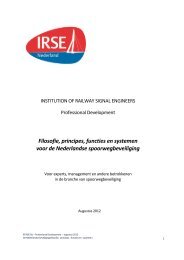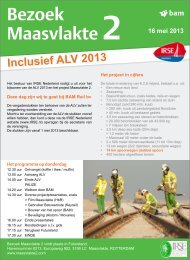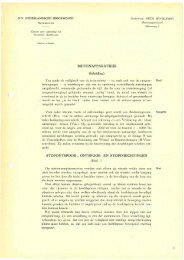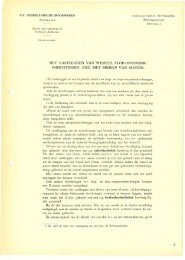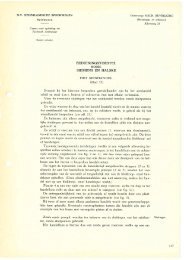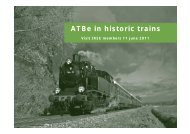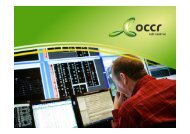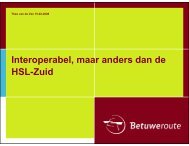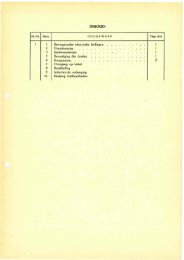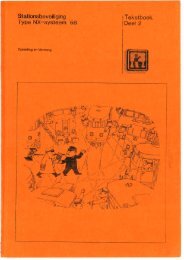intermittent and continuous ATP 101119 - irse.nl
intermittent and continuous ATP 101119 - irse.nl
intermittent and continuous ATP 101119 - irse.nl
- No tags were found...
Create successful ePaper yourself
Turn your PDF publications into a flip-book with our unique Google optimized e-Paper software.
signal information, it has to be actively powered from the wayside, its length can beup to several hundred meters.To study the application of radio for ATC purposes, a research program namedDIBMOF (services integrating railway mobile radio) was performed. It confirmed theconcept of using the same radio system for voice communication between driver <strong>and</strong>central <strong>and</strong> data transmission. The base for radio communication was the GSM(Global System for Mobile communication) system, which was specified in Europe<strong>and</strong> has become a world-wide st<strong>and</strong>ard. Most of the public cellular networks inEurope are compatible with the GSM st<strong>and</strong>ard.The International Union of Railways took a majority decision to introduce GSM asthe base for voice <strong>and</strong> data transmission between train <strong>and</strong> ground. For railwayapplications, an exclusive transmission frequency range below the frequency of thepublic GSM b<strong>and</strong> was recommended <strong>and</strong> granted. A survey was made to collect allthe requirements from the member railways for such a radio system. The evaluatio<strong>nl</strong>ed to a system called GSM-R, where R st<strong>and</strong>s for railways. This set of requirementswas passed on to ETSI (European Telecommunication St<strong>and</strong>ards Institute), whogenerated, based also on the requirements of others, the set of specifications GSM2+. Most of the additional features requested by UIC <strong>and</strong> exceeding the GSM 2+st<strong>and</strong>ard are o<strong>nl</strong>y related to voice services. There is, however, one future importantfeature which permits short headways by reducing the time for establishing aconnection to a train. This service is based on Internet protocols <strong>and</strong> is called GPRS(General Package Radio System).A specific problem in transmitting vital signalling data over an open radio channelis that of safety <strong>and</strong> security. European st<strong>and</strong>ards define threats against whichsuitable defences have to be established:• In the same way as in conventional systems, a protection against r<strong>and</strong>om errors caused by lighteningor similar effects has to be in place. This is normally done by adding code bits to the message.• Data are passed through a number of devices with unknown behaviour from transmitter to receiver.Therefore, the transmission path is frequently called a grey channel, which means that it is not totallytransparent for the user. Coding strategies have to be used which allow the receiver to detect <strong>and</strong>reject corrupted messages.• There may be an intrusion from external users of the open network which is common to public users<strong>and</strong> railway users. Therefore, protective coding has to be used to avoid unauthorised access to thedata transmission between train <strong>and</strong> wayside.Selection Of The Appropriate Level Of OperationThe same criteria as for existing systems apply to ERTMS/ETCS. For theintroduction or replacement of a simple <strong>ATP</strong> system, level 1 based on balises o<strong>nl</strong>y isthe most cost effective solution. There are, however, two aspects to be considered:• As with any <strong>intermittent</strong> <strong>ATP</strong> system, there has to be sufficient overlap in the track layout to allow atrain to stop within the overlap when it passes the signal at danger with the release speed of thesystem. AS discussed in chapters 3.1.1 <strong>and</strong> 3.1.2, this release speed is a trade-off between line42





